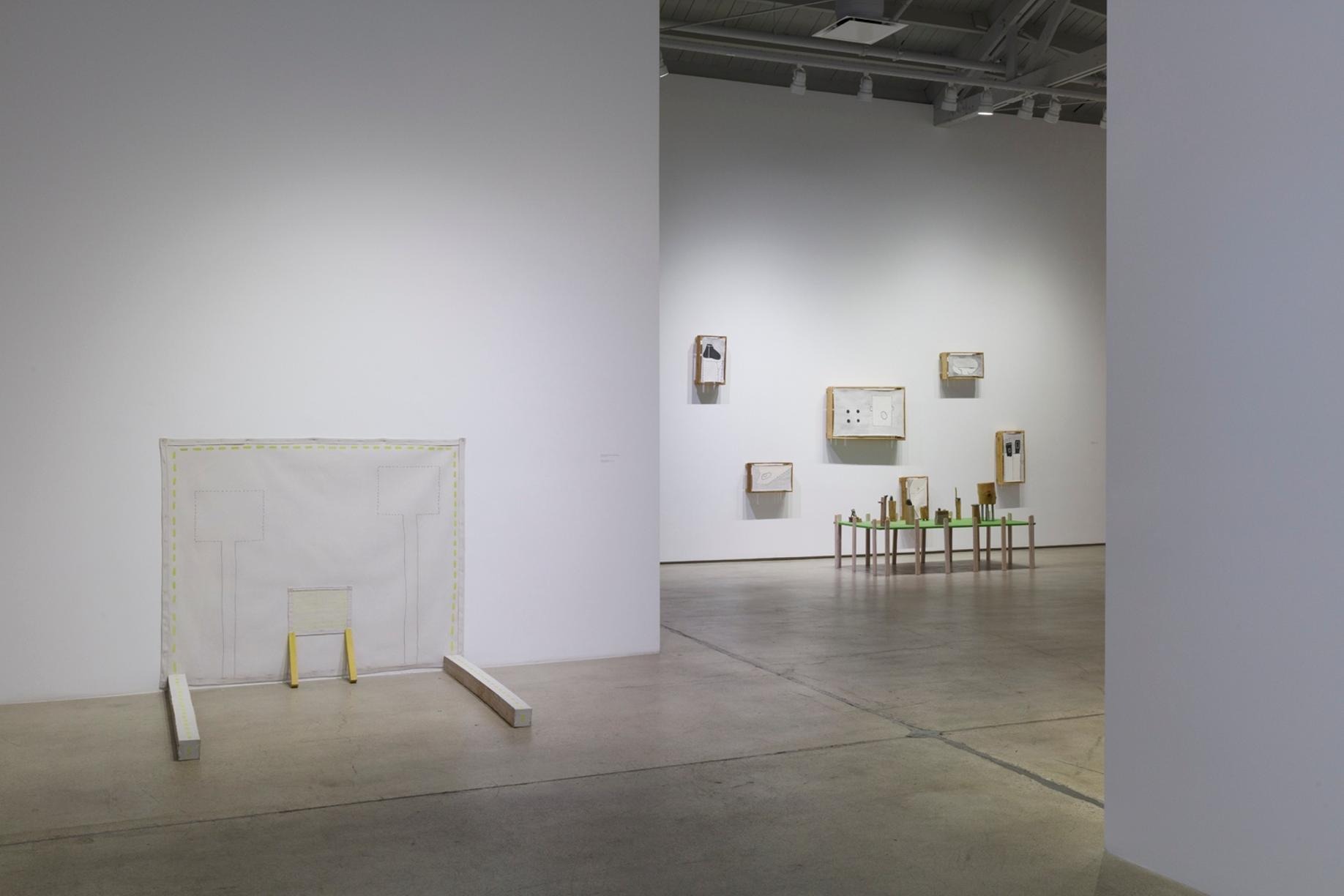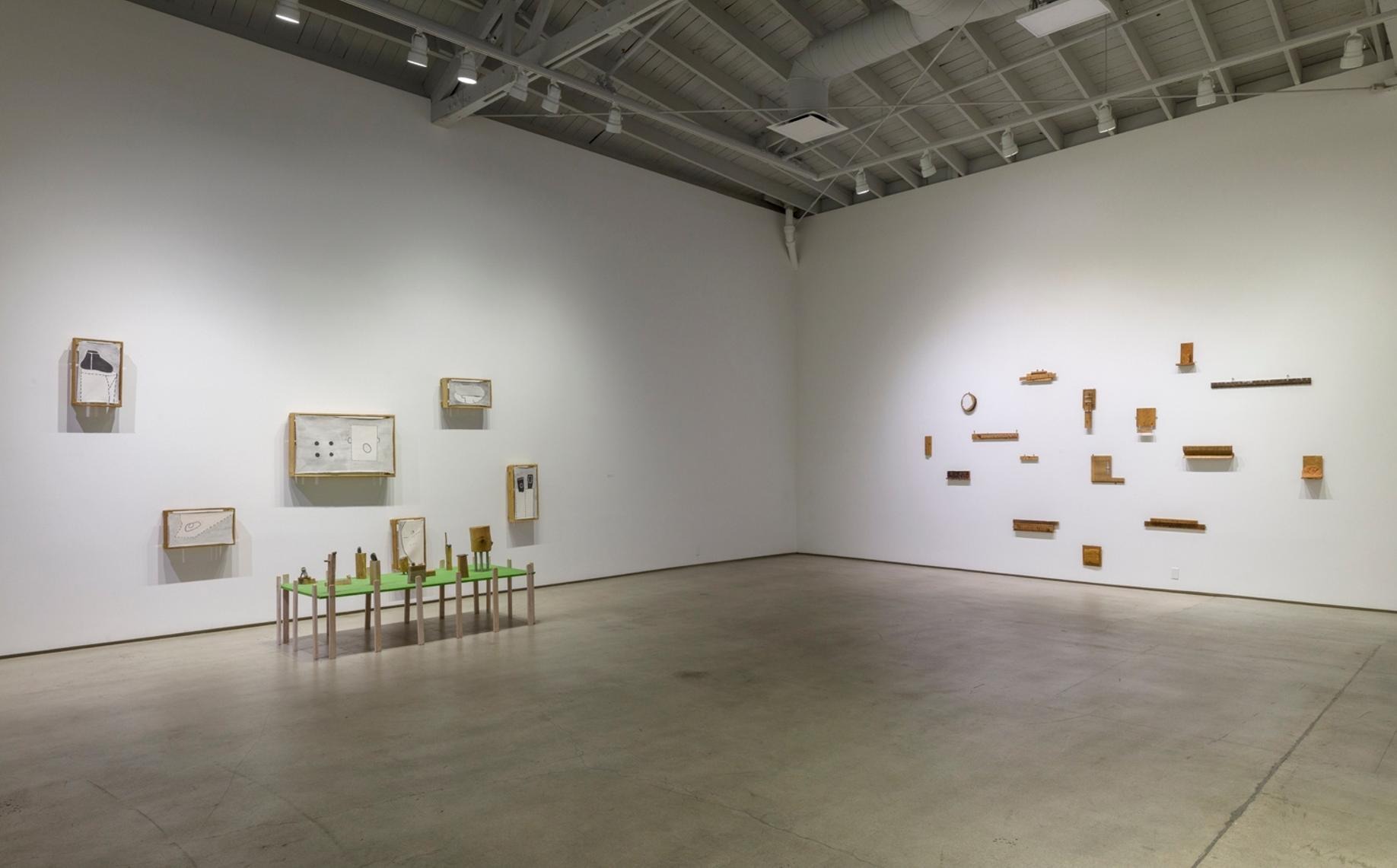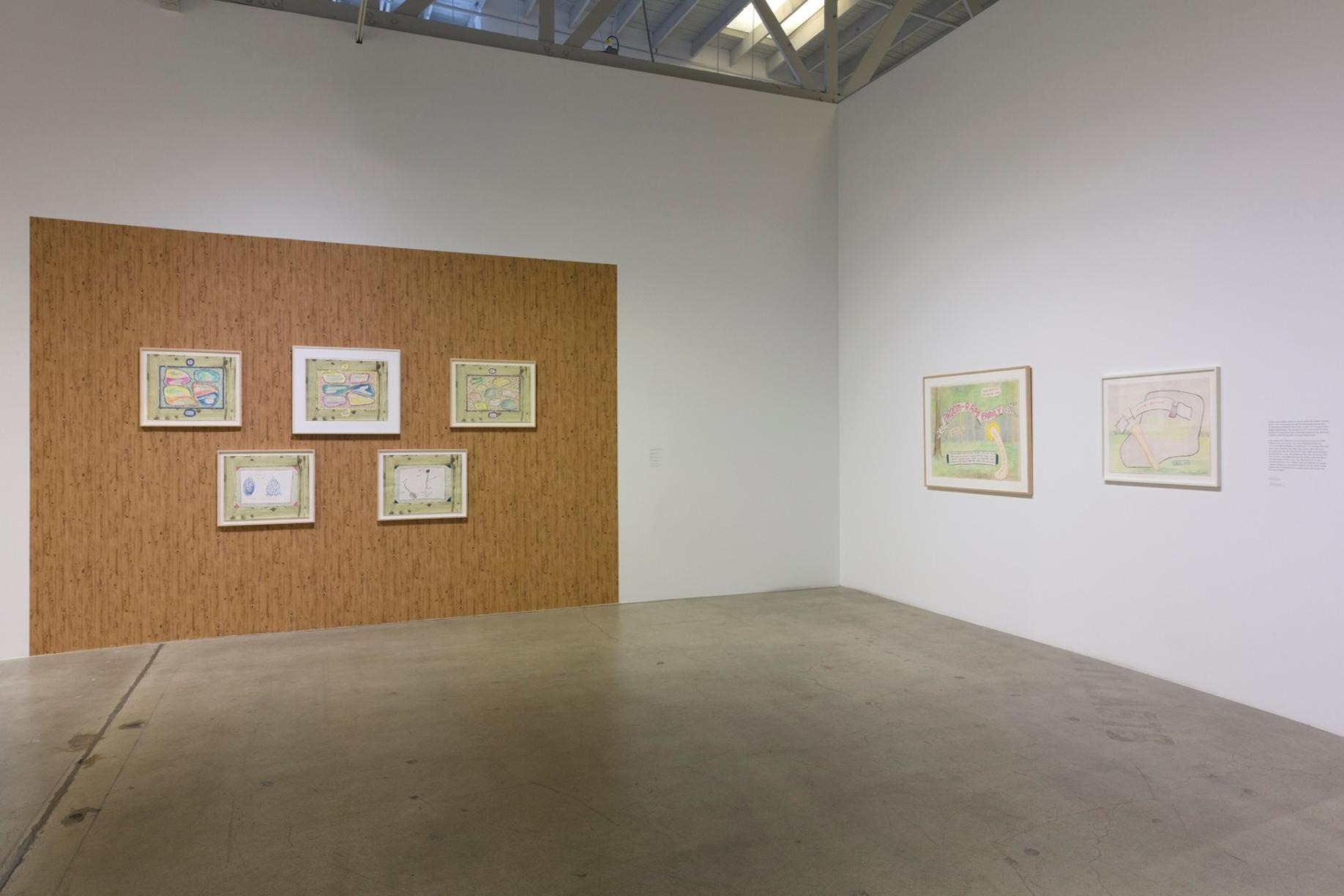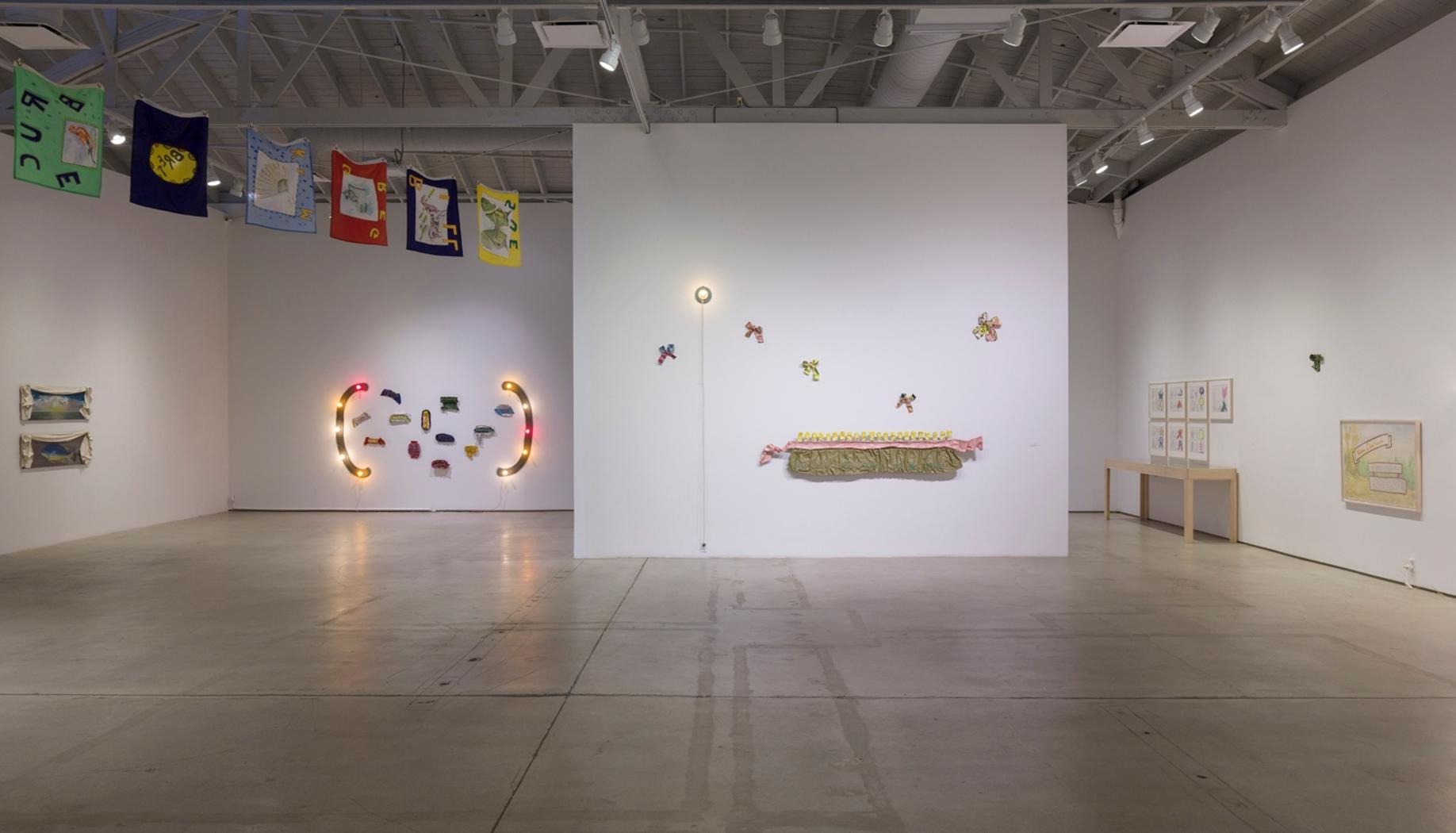Ree Morton
The Plant That Heals May Also Poison
16 Feb - 14 Jun 2020

Ree Morton: The Plant That Heals May Also Poison, installation view, Institute of Contemporary Art, Los Angeles, 2020. Photo: Jeff McLane/ICA LA. © The Estate of Ree Morton; courtesy Alexander and Bonin, New York and Annemarie Verna Galerie, Zurich

Ree Morton: The Plant That Heals May Also Poison, installation view, Institute of Contemporary Art, Los Angeles, 2020. Photo: Jeff McLane/ICA LA. © The Estate of Ree Morton; courtesy Alexander and Bonin, New York and Annemarie Verna Galerie, Zurich

Ree Morton: The Plant That Heals May Also Poison, installation view, Institute of Contemporary Art, Los Angeles, 2020. Photo: Jeff McLane/ICA LA. © The Estate of Ree Morton; courtesy Alexander and Bonin, New York and Annemarie Verna Galerie, Zurich

Ree Morton: The Plant That Heals May Also Poison, installation view, Institute of Contemporary Art, Los Angeles, 2020. Photo: Jeff McLane/ICA LA. © The Estate of Ree Morton; courtesy Alexander and Bonin, New York and Annemarie Verna Galerie, Zurich

Ree Morton: The Plant That Heals May Also Poison, installation view, Institute of Contemporary Art, Los Angeles, 2020. Photo: Jeff McLane/ICA LA. © The Estate of Ree Morton; courtesy Alexander and Bonin, New York and Annemarie Verna Galerie, Zurich

Ree Morton: The Plant That Heals May Also Poison, installation view, Institute of Contemporary Art, Los Angeles, 2020. Photo: Jeff McLane/ICA LA. © The Estate of Ree Morton; courtesy Alexander and Bonin, New York and Annemarie Verna Galerie, Zurich

Ree Morton: The Plant That Heals May Also Poison, installation view, Institute of Contemporary Art, Los Angeles, 2020. Photo: Jeff McLane/ICA LA. © The Estate of Ree Morton; courtesy Alexander and Bonin, New York and Annemarie Verna Galerie, Zurich

Ree Morton: The Plant That Heals May Also Poison, installation view, Institute of Contemporary Art, Los Angeles, 2020. Photo: Jeff McLane/ICA LA. © The Estate of Ree Morton; courtesy Alexander and Bonin, New York and Annemarie Verna Galerie, Zurich

Ree Morton: The Plant That Heals May Also Poison, installation view, Institute of Contemporary Art, Los Angeles, 2020. Photo: Jeff McLane/ICA LA. © The Estate of Ree Morton; courtesy Alexander and Bonin, New York and Annemarie Verna Galerie, Zurich

Ree Morton: The Plant That Heals May Also Poison, installation view, Institute of Contemporary Art, Los Angeles, 2020. Photo: Jeff McLane/ICA LA. © The Estate of Ree Morton; courtesy Alexander and Bonin, New York and Annemarie Verna Galerie, Zurich
The Plant That Heals May Also Poison is the first major United States exhibition of artist Ree Morton (1936-1977) in nearly four decades. The exhibition features several rarely seen works, including a selection of installations, drawings, sculptures, paintings, and archival materials which span a single decade of artistic production before Morton’s untimely death in 1977.
Throughout her career, Morton produced a philosophically complex body of work rich in emotion. Though celebrated by peers and younger artists, Morton’s influence on contemporary art remains considerable yet muted, her legacy widely underrecognized. The eclectic arc of Morton’s practice was rooted in Postminimalism, the inclusion of personal narrative—through literary, theoretical, and autobiographical references—and use of bold color and theatrical imagery infused her objects with sly humor and a concern with the decorative, generating a feminist legacy increasingly appreciated in retrospect. Reimagining tropes of love, friendship, and motherhood, while radically asserting sentiment as a legitimate subject of artmaking, Morton’s conceptually rigorous work demonstrates generosity towards the viewer, its spirit of playfulness and joy inflecting all aspects of the exhibition.
Organized by the Institute of Contemporary Art, University of Pennsylvania, the exhibition is accompanied by a fully illustrated catalogue co-published with Dancing Foxes Press with texts by Kate Kraczon, the exhibition’s curator; artist Nayland Blake; Kathryn Gile; and scholars Roksana Filipowska and Abi Shapiro.
Throughout her career, Morton produced a philosophically complex body of work rich in emotion. Though celebrated by peers and younger artists, Morton’s influence on contemporary art remains considerable yet muted, her legacy widely underrecognized. The eclectic arc of Morton’s practice was rooted in Postminimalism, the inclusion of personal narrative—through literary, theoretical, and autobiographical references—and use of bold color and theatrical imagery infused her objects with sly humor and a concern with the decorative, generating a feminist legacy increasingly appreciated in retrospect. Reimagining tropes of love, friendship, and motherhood, while radically asserting sentiment as a legitimate subject of artmaking, Morton’s conceptually rigorous work demonstrates generosity towards the viewer, its spirit of playfulness and joy inflecting all aspects of the exhibition.
Organized by the Institute of Contemporary Art, University of Pennsylvania, the exhibition is accompanied by a fully illustrated catalogue co-published with Dancing Foxes Press with texts by Kate Kraczon, the exhibition’s curator; artist Nayland Blake; Kathryn Gile; and scholars Roksana Filipowska and Abi Shapiro.
